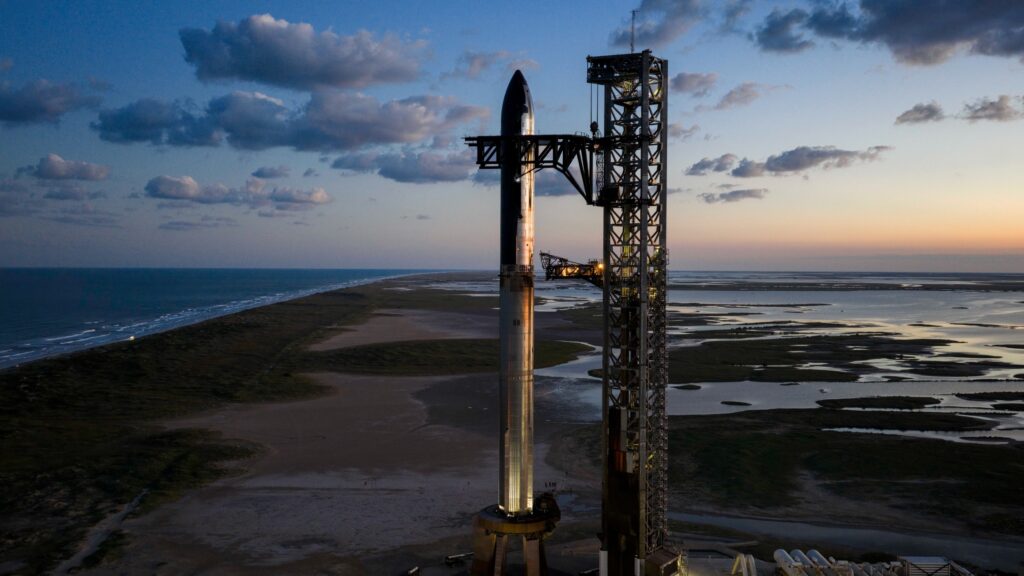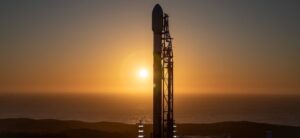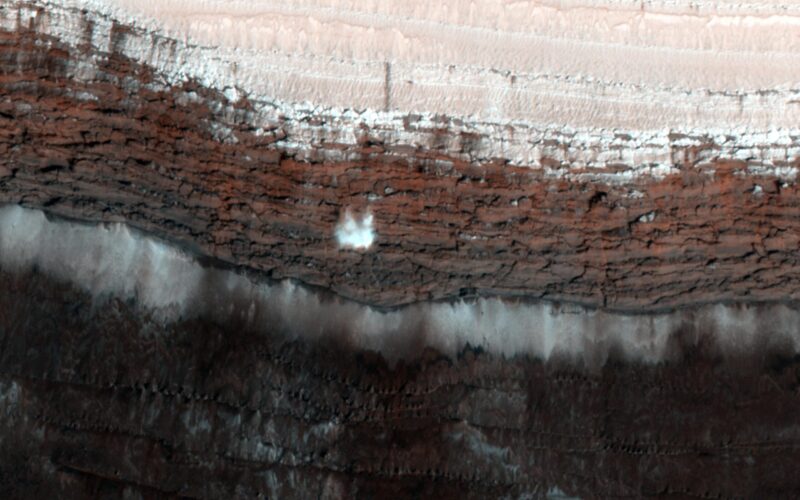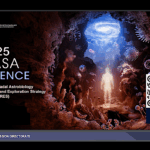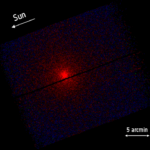Now Reading: Study to examine environmental impacts of increased SpaceX launches from Vandenberg
-
01
Study to examine environmental impacts of increased SpaceX launches from Vandenberg
Study to examine environmental impacts of increased SpaceX launches from Vandenberg
WASHINGTON — A new environmental study is intended to support the continued increase of SpaceX launches from a California spaceport, but that growth faces potential obstacles.
A SpaceX Falcon 9 lifted off Dec. 28 from Vandenberg Space Force Base in California, deploying 22 Starlink satellites. That was the 47th and final orbital launch of the year from Vandenberg, a cadence not seen from that facility since the 1960s.
The number of launches from Vandenberg has increased sharply in recent years from just a single orbital launch, of a Falcon 9, in 2020. That growth has been driven by SpaceX, which accounted for every Vandenberg orbital launch in 2024 except for one launch of Firefly Aerospace’s Alpha rocket in July.
An environmental study getting underway would allow even more launches from Vandenberg. The Department of the Air Force announced Dec. 13 it would carry out an environmental impact statement (EIS) covering both an increase in SpaceX launches at Vandenberg as well as use of a second launch pad.
The EIS will examine the environmental impacts from the redevelopment of Space Launch Complex (SLC) 6 for use by SpaceX for Falcon 9 and Falcon Heavy launches. The Space Force awarded SpaceX access to SLC-6, aka “Slick Six,” in 2023 after the final launch of United Launch Alliance’s Delta 4 from the site.
SLC-6 was built in the 1960s for the Air Force’s Manned Orbiting Laboratory program, which was canceled in 1969 before any launches took place. It was later converted to support Space Shuttle launches, but mothballed after the Challenger accident in 1986 before hosting a single launch. ULA took over the site in 2006.
The EIS would also allow SpaceX to conduct up to 100 launches annually between SLC-6 and its existing launch pad at Vandenberg, SLC-4. That includes booster landings at both launch sites as well as droneships downrange.
“The Proposed Action is needed to meet current and near-term U.S. government space launch requirements from the DoD space launch range that supports launches centered at VSFB (Western Range), specifically for medium and heavy-lift to polar, geostationary, and other orbits less reliably available elsewhere without compromising current launch capabilities,” the Department of the Air Force stated in a public notice about the planned EIS on a dedicated website. “The Proposed Action is also needed to expand launch capacity by returning heavy-lift launch capability to the Western Range.”
The Department of the Air Force is planning three in-person public meetings Jan. 14 through 16 in Ventura, Santa Barbara and Lompoc, California, as well as an online public meeting Jan. 23 to discuss the planned EIS and receive comments on what should be included in the scope of the study. Those comments can also be submitted through Jan. 27.
The study’s website proposes an expedited schedule for carrying out the EIS, with a final version of the study published in the fall along with a record of decision of which option the Department of the Air Force will pursue. The study includes two options that are identical except for what hangar facility SpaceX would use at SLC-6, along with a “no action” alternative. By contrast, a separate EIS by the Department of the Air Force for Starship launches from Cape Canaveral Space Force Station in Florida kicked off with scoping meetings in March, but is not scheduled to conclude until the fall.
Plans to further increase launches from Vandenberg are likely to face opposition from those concerned about the environmental impacts of those activities. In October, the California Coastal Commission voted to reject a “consistency determination” from the Space Force seeking to increase the number of Falcon 9 launches at Vandenberg from 36 to 50 per year.
The rejection was largely a symbolic one, since the commission does not have unilateral authority to block the increase in launches. The move attracted attention, though, because some commissioners said they opposed the increase based on unrelated comments by Elon Musk, the company’s founder and chief executive, as well as concerns about SpaceX business practices in general. That prompted a lawsuit by SpaceX against the commission, claiming that the state body engaged in “naked political discrimination” against the company by voting against the consistency determination.
Issues about Musk and SpaceX, though, took up only a small part of the commission’s debate. Some argued that SpaceX, and not the Space Force, should be seeking the increase in launches because most of its launches from Vandenberg were commercial launches and not for the government. There were also concerns about the increase in launches, with the commission concurring earlier in the year with an increase to 36 launches and advised at the hearing that another increase to 100 launches would be proposed in early 2025.
Comments to the commission, from both environmental organizations and the general public, raised environmental issues about the sharp increase in launches from Vandenberg. Some called for holding off on an increase from 36 to 50 launches annually until more data is collected on the environmental effects of the recent increase to 36 launches. Others complained about sonic booms from launches and landings, worried about potential damage to their homes or people “plain scared out of their minds,” as one person put it.
Those noise concerns made their way into the National Defense Authorization Act passed by Congress earlier this month. “The committee notes that the cadence of national security space launches is increasing. While vital, the noise associated with launch, particularly sonic booms, can be disruptive to nearby communities,” the report accompanying the bill stated. “Facilities such as hospitals, daycares, schools, senior-living facilities, and private residences can all be impacted by noise disturbances.”
The report suggested that the Defense Department pursue a noise mitigation program modeled in the Community Noise Mitigation Program for aircraft, where the department funds installation of noise-mitigating insulation in buildings and residences affected by noise from military fixed-wing aviation operations.
The report language was inserted by Rep. Salud Carbajal (D-Calif.), a member of the House Armed Services Committee whose district includes Vandenberg.
“Residents of the Central Coast in Lompoc and other communities nearby Vandenberg have shared their growing concerns as increased space launch cadence makes launch noise a larger burden on their routines and quality of life,” he said in a statement about the noise provision. “This language makes it clear to the Department of Defense that these are not concerns they can plug their ears and ignore. Congress will take these impacts seriously.”
Stay Informed With the Latest & Most Important News
Previous Post
Next Post
-
 012024 in Review: Highlights from NASA in Silicon Valley
012024 in Review: Highlights from NASA in Silicon Valley -
 02Panasonic Leica Summilux DG 15mm f/1.7 ASPH review
02Panasonic Leica Summilux DG 15mm f/1.7 ASPH review -
 03From Polymerization-Enabled Folding and Assembly to Chemical Evolution: Key Processes for Emergence of Functional Polymers in the Origin of Life
03From Polymerization-Enabled Folding and Assembly to Chemical Evolution: Key Processes for Emergence of Functional Polymers in the Origin of Life -
 04How New NASA, India Earth Satellite NISAR Will See Earth
04How New NASA, India Earth Satellite NISAR Will See Earth -
 05And Thus Begins A New Year For Life On Earth
05And Thus Begins A New Year For Life On Earth -
 06Astronomy Activation Ambassadors: A New Era
06Astronomy Activation Ambassadors: A New Era -
07SpaceX launch surge helps set new global launch record in 2024













